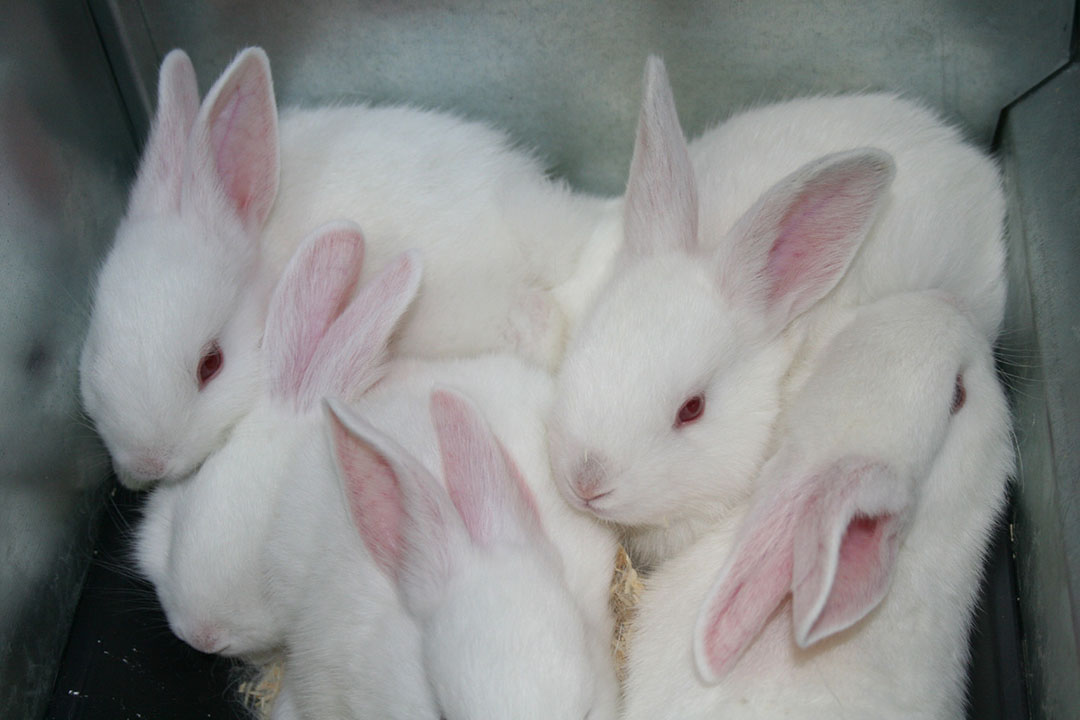A learning process across all species

Going through a process of reducing the use of antibiotics is a long-distance race which needs to be done step by step. The Sustainable Animal Health Management program has a commitment to help all farmers to succeed in the challenge of reducing antibiotic usage across all species.
Involved for many years in finding solutions to help in reducing the use of antibiotics in livestock, Mixscience has developed the Sustainable Animal Health Management (SAHM) approach which aims to preserve the good health of farm animals by limiting the use of antibiotics in order to ensure the health quality of finished products for all species. The rabbit industry, for example, has greatly reduced the use of antibiotics in recent years and discovered some actions that can be applied for other species.
2 main challenges: Short and mid-term
- The first challenge is to meet societal expectations related to the reduction of antibiotic use on farms. The fight against antimicrobial resistance is a major public health issue in which the rabbit industry is also part of. The customers expectations of quality are increasingly high and the farms must meet the demand.
- The second challenge is the matter of sustainability in the sector. Reducing the use of antibiotics avoids the effect of resistance by ensuring their effectiveness for animal treatment when they are really needed. It is also necessary to anticipate the evolution of regulations, especially around medicinal feed, to prepare to use the antibiotics differently from now on.
In efforts to reduce antibiotic use, many areas should be considered including genetics, rearing conditions, farming practices, feed, technical and veterinary supervision. However, reducing antibiotics does not mean zero antibiotics. Livestock animals must be treated if the health situation requires it without calling into question the efforts and objections of decline over time. Maintaining the technical and economic performance of farms is a necessity and cannot be implicated while measures are taken to reduce antibiotic usage.
A further important aspect is the need to reassure farmers of future efficiency. Integrating new practices to reduce the use of antibiotics is not always easy to implement and can provoke anxiety. It is necessary to support the farmers in the changes which they face and consolidate them in the choices they make. Third parties can bring them objective measurements regarding ventilation, feeding, water management and the management of stock renewal. But, farmers need points of reference which they can easily rely on on a daily basis because such an approach in the long term can only be considered when the correct conditions are in place. Support and follow-up over time are then decisive.
Figure 1 – The 5 pillars of the SAHM approach.

SAHM – Lessons learned from rabbits
The SAHM approach relies on 5 key pillars. Discover how they are applied by taking the rabbit industry as an example:
1. Good farming practices
Controlling parameters such as the general quality of the barn, the environment, breeding practices, etc., is necessary to maintain the animals in a good general health status. For example, on a rabbit farm, a good practice is to carry out a sanitary and technical sorting of animals. The state of the livestock is also important. A focus should be on doing less, but doing it better, like selecting the right number of young rabbits at the beginning depending on the female. Using essential oils by spraying or in-feed like Cunimune could also be useful to decrease risk of respiratory problems. Finally, respect of technical fundamentals and rigour in everyday life are the keys to success.
2. Biosecurity
Is it important to implement good hygiene practices to reduce the risk of infection and improve biosecurity. That means set up sanitary barriers when entering the farms, enforce the ‘go-forward’ principle and apply good cleansing and disinfecting procedures. Water quality is also an important matter. A water analysis coupled with a farm audit help to take the right action in order to guarantee a good water quality up until nipple drinkers. Mixscience also offers a complete audit through the Aquascope service in order to highlight the vigilance points and propose the actions to put in place.
3. Nutrition and immunity
Nutrition and immunity are very closely linked to each other. An adequate supply of nutrients is required to ensure the proper efficiency of the host defences. A well balanced diet may reduce the adverse effects of stress and enhance recovery from stressful periods. Animal nutrition knowledge is quite extensive and there are complete listings of the required nutrients for each species at each time of their life.
It is important to characterise with precision raw material nutritional values and follow them over time (control plan). This information will help to precisely know the specifications of each raw material in order to optimise the use when formulating the feed.Feed is of course an essential element in rearing animals. Having a high quality feed made of well-selected raw materials is a prerequisite.
Secondly, having animal feed formulas adapted to the animal’s physiology (young females, primiparous, multiparous, beginning and end of fattening) is a definite asset for the farm which aims to reduce the use of antibiotics. And finally, decreasing the use of antibiotics can be achieved in partnership with Mixscience but also through knowledge exchanges and sharing with other farmers.
4. Alternative solutions
Within the context of global antibiotic reduction, considerable effort has been done to develop alternative solutions. Within Mixscience, nutritional solutions are the fruit of extensive research from selecting mixes of active ingredients, determining adequate dosage and tests in experimental stations and field farms. Some products benefit from an innovative technique of vectorisation of assets called VStar, this delivers the product in the digestive tract at the right place and at the right dose. These products are very useful to maintain stability in rearing. One of them, Cunimune can be used in maternity feed and weaning. Some farmers noticed positive effects including rabbits with a cleaner nose, better breathing and more homogeneous at weaning (often defined as the most sensitive rearing phase). These alternative nutritional solutions, available at a reasonable cost, are being developed because they help to reduce the use of antibiotics, improve the welfare of animals and bring calm to the daily operation of the farm.
5. Responsible antibiotic use
The goal is not to rise against antibiotics use but to induce a more proper use, choosing the specific one and using it only when needed. Antibiotic reduction is mandatory and remains a complex issue. It must be tackled by global programmes impacting every layer of management on farm. This goes from an increase of the natural defences of the animals (stress limitation, well-balanced nutrition, etc.) to constant improvements in hygiene and biosecurity techniques.
Animal welfare and antimicrobial resistance are major societal factors today and have to be taken into account to give a good image of the profession. The respect of good farming practices (management of ventilation, respect of densities, isolation of sick animals, disinfection, etc.) and the use of essential oils before using antibiotics are an effective solution. Also, the use of antibiotics at only one physical stage like weaning helps to avoid their use later on. The rearing process is done in stages and requires increased vigilance around the livestock, reactivity and constant questioning. With the economic margins of operation being slim, constant monitoring on farm is needed for a successful animal performance.
Author: Anne-Laure Tournay, Mixscience







